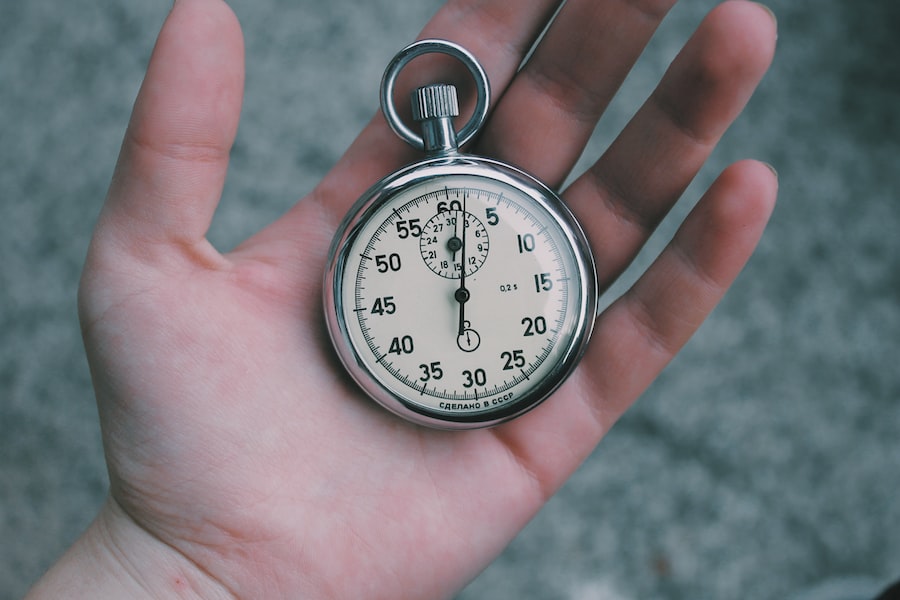The Perfect Timing: When to Transplant Iris for Optimal Growth

Iris plants are known for their vibrant and colorful flowers, making them a popular choice for gardens and landscapes. These perennial plants have a unique growth cycle that requires careful attention and maintenance. Understanding the growth cycle of iris plants is essential for successful transplanting and ensuring their health and longevity.
Key Takeaways
- Iris plants have a growth cycle that includes a period of active growth, dormancy, and rejuvenation.
- Factors such as weather, soil conditions, and plant health can affect the timing of transplanting iris.
- The best time to transplant iris is during their dormant period in late summer or early fall.
- Signs that indicate the right time to transplant iris include yellowing leaves, overcrowding, and lack of blooms.
- Soil temperature is a crucial factor in successful transplanting of iris, with a range of 50-70°F being ideal.
Understanding the Growth Cycle of Iris Plants
The growth cycle of iris plants consists of several stages, each with its own specific requirements. The first stage is the dormant period, which occurs during the winter months. During this time, the plant’s energy is focused on root development and storing nutrients for the upcoming growing season.
As spring arrives, the second stage begins with the emergence of new leaves and flower buds. This is a critical time for the plant, as it needs ample sunlight and water to support its growth. The third stage is the blooming period, where the iris plant produces its beautiful flowers. This stage typically lasts for a few weeks, depending on the variety.
After blooming, the plant enters the fourth stage, which is the post-bloom period. During this time, the plant focuses on seed production and replenishing its energy reserves. Finally, the plant enters the fifth stage, which is the dormancy period once again. This cycle repeats itself year after year.
Factors Affecting the Timing of Transplanting Iris
Several factors can affect when to transplant iris plants. One important factor is the age of the plant. Younger plants are more adaptable and can handle transplanting better than older ones. It is generally recommended to transplant iris plants every three to four years to prevent overcrowding and maintain their health.
Another factor to consider is the weather conditions. Transplanting should be done when temperatures are mild and there is no risk of frost or extreme heat. Spring or early fall are usually the best times for transplanting iris plants, as these seasons provide optimal conditions for root establishment and growth.
Soil conditions also play a significant role in determining the timing of transplanting. The soil should be well-drained and not too wet or dry. It is important to wait until the soil has warmed up sufficiently in the spring before transplanting, as cold soil can shock the plant and hinder its growth.
Best Time of the Year to Transplant Iris
| Month | Average Temperature (°F) | Average Rainfall (inches) | Best Time to Transplant |
|---|---|---|---|
| March | 55 | 3.5 | Early March |
| April | 62 | 3.0 | Mid-April |
| May | 70 | 2.5 | Late May |
| June | 78 | 2.0 | Early June |
The best time of year to transplant iris plants is typically in late summer or early fall. This allows the plants to establish their roots before the onset of winter and ensures they have enough time to recover before the next growing season.
Transplanting in the fall also allows the plants to benefit from cooler temperatures and more consistent rainfall, which can help with root development and reduce stress on the plant. However, if you live in a region with mild winters, spring can also be a suitable time for transplanting iris plants.
How to Identify the Right Time to Transplant Iris
There are several signs that indicate when your iris plants are ready for transplanting. One of the most obvious signs is overcrowding. If your iris plants are growing too close together and competing for resources, it may be time to divide and transplant them.
Another sign is when the plant’s foliage starts to turn yellow or brown. This indicates that the plant has finished its blooming cycle and is entering the post-bloom period. This is an ideal time for transplanting, as the plant is no longer actively growing and can focus on root development.
Additionally, if you notice that your iris plants are not producing as many flowers as they used to or if the flowers are smaller in size, it may be a sign that they need to be transplanted. Over time, iris plants can deplete the nutrients in the soil, leading to reduced flower production.
Soil Temperature and its Impact on Transplanting Iris

Soil temperature plays a crucial role in the success of transplanting iris plants. Iris plants prefer soil temperatures between 50°F and 70°F (10°C and 21°C) for optimal growth. If the soil is too cold, it can shock the plant and delay root establishment.
To ensure the soil is at the right temperature, it is recommended to use a soil thermometer to measure the temperature at a depth of 4 to 6 inches (10 to 15 cm). If the soil temperature is consistently within the desired range, it is safe to proceed with transplanting.
Preparing the Soil for Transplanting Iris
Before transplanting iris plants, it is important to prepare the soil to provide the best conditions for their growth. Start by removing any weeds or grass from the area where you plan to transplant. This will prevent competition for nutrients and reduce the risk of pests and diseases.
Next, loosen the soil using a garden fork or tiller. This will improve drainage and allow the roots to penetrate easily. If the soil is heavy clay or sandy, consider adding organic matter such as compost or well-rotted manure to improve its structure and fertility.
It is also a good idea to test the pH of the soil before transplanting. Iris plants prefer slightly acidic to neutral soil with a pH range of 6.0 to 7.0. If the pH is too high or too low, you can adjust it by adding lime or sulfur accordingly.
Tips for Successful Transplanting of Iris
To ensure successful transplanting of iris plants, follow these tips:
1. Choose healthy plants: Select plants that are free from pests and diseases and have strong, green foliage.
2. Dig carefully: When digging up iris plants, be careful not to damage the rhizomes (thickened underground stems). Use a garden fork or shovel to gently lift the plants out of the ground.
3. Divide the rhizomes: Once the plants are out of the ground, divide the rhizomes into smaller sections, making sure each section has at least one healthy fan of leaves and a portion of the rhizome.
4. Trim the leaves: Trim the leaves back to about 6 inches (15 cm) to reduce stress on the plant and conserve energy.
5. Plant at the right depth: When transplanting, make sure to plant the rhizomes at the same depth they were previously growing. The top of the rhizome should be just above the soil surface.
6. Space them properly: Leave enough space between each plant to allow for future growth and prevent overcrowding.
7. Water thoroughly: After transplanting, water the plants thoroughly to settle the soil and ensure good root-to-soil contact.
Watering and Fertilizing after Transplanting Iris
Proper watering and fertilizing are essential for the health and growth of transplanted iris plants. After transplanting, water the plants deeply and regularly to keep the soil evenly moist but not waterlogged. Avoid overhead watering, as this can lead to fungal diseases.
During the first year after transplanting, it is important to fertilize iris plants regularly to promote healthy growth. Use a balanced fertilizer with equal amounts of nitrogen, phosphorus, and potassium. Apply the fertilizer according to the manufacturer’s instructions, taking care not to over-fertilize, as this can burn the roots.
Common Mistakes to Avoid when Transplanting Iris
There are several common mistakes that can hinder the success of transplanting iris plants. One common mistake is planting the rhizomes too deep. If planted too deep, the rhizomes can rot and fail to produce flowers. Make sure to plant them at the correct depth, with the top of the rhizome just above the soil surface.
Another mistake is not dividing the rhizomes properly. If the rhizomes are not divided into smaller sections, they can become overcrowded and compete for resources. This can lead to reduced flower production and overall plant health. Make sure to divide the rhizomes into smaller sections with at least one healthy fan of leaves and a portion of the rhizome.
Finally, another mistake is not providing adequate water and nutrients after transplanting. Transplanted iris plants require regular watering and fertilizing to establish their roots and promote healthy growth. Make sure to water deeply and regularly, and fertilize according to the plant’s needs.
Monitoring and Caring for Transplanted Iris Plants
After transplanting iris plants, it is important to monitor them closely and provide proper care to ensure their health and success. Keep an eye out for any signs of stress or disease, such as wilting leaves or discoloration. If you notice any issues, take immediate action to address them.
Regularly check the soil moisture levels and adjust your watering schedule accordingly. Iris plants prefer evenly moist soil, so make sure not to let the soil dry out completely between waterings. However, be careful not to overwater, as this can lead to root rot.
Throughout the growing season, remove any weeds or grass that may compete with the iris plants for nutrients and water. Mulching around the plants can help suppress weeds and conserve moisture in the soil.
Transplanting iris plants can be a rewarding experience that allows you to rejuvenate your garden and ensure the health and longevity of your plants. By understanding the growth cycle of iris plants, identifying the right time for transplanting, preparing the soil properly, and providing adequate care after transplanting, you can enjoy beautiful blooms year after year. So don’t be afraid to give it a try and see the stunning results for yourself!



